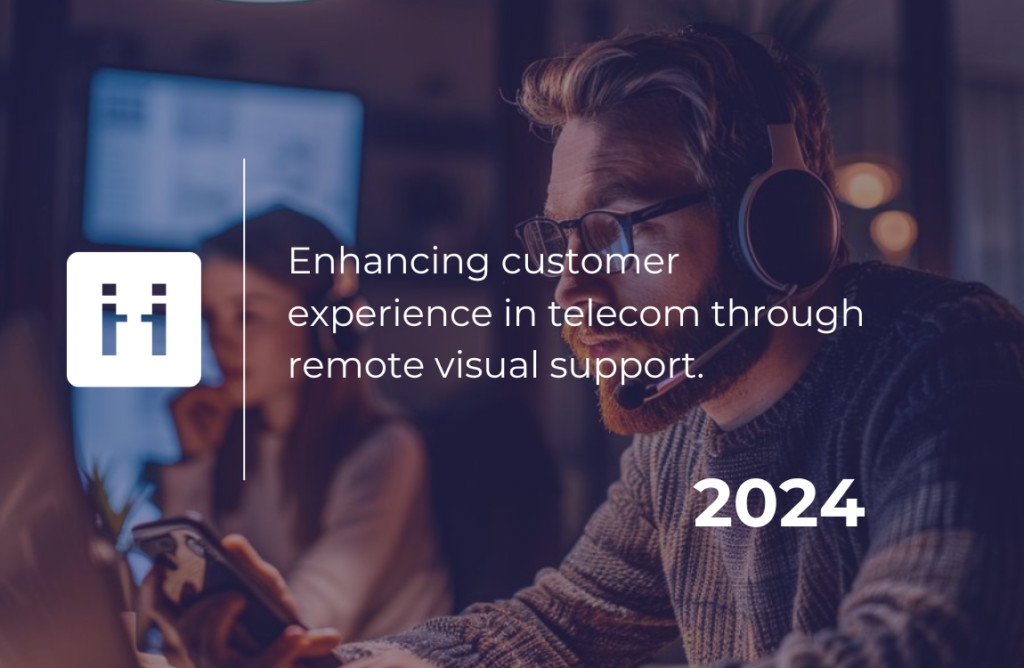In a world where connectivity is paramount, telecommunications companies are constantly seeking innovative ways to optimize customer experience.
One of the recent technological advancements revolutionizing this field is remote visual support. By enabling real-time visual communication between technicians and customers, remote visual support offers significant potential to enhance service quality in telecommunications.
So, how does remote visual support work in this context? What kind of value does it offer in terms of customer interaction and overall satisfaction?
How does remote visual support in telecommunications works ?
In the field of telecommunications, remote visual support is transforming the way technical issues are managed and solved.
Collaboration at the core of remote visual support
Unlike traditional customer support methods that often rely solely on verbal exchanges or written instructions, remote visual support provides an essential visual dimension. It allows technicians to directly observe the issue faced by the customer in real-time, using the camera of their smartphone or tablet. This live visualization provides instant and precise understanding of the situation, facilitating the diagnostic and resolution process.
Moreover, remote visual support enables more efficient and interactive communication between the technician and the customer, as it allows not only to see and hear but also to demonstrate and share potential solutions.
By combining the power of visual communication with the flexibility of mobile technologies, remote visual support offers a significant advantage over traditional methods, fostering intelligent remote collaboration. This leads to faster, more precise, and satisfying field service for customers.
How does remote visual support work in the field?
Remote visual support allows for quick and detailed analysis of breakdowns or malfunctions through immersive visualization of the situation.
To set up remote communication, whether between a technician and a peer, or between customer and technician, all you have to do is send a request to the maintenance department. The latter then transmits a connection link to start the video.
Technological advancements in this field offer many useful features:
- Screenshots and recordings of specific elements
- Preservation of histories for precise maintenance tracking
- Integration of video with chat for seamless communication
- Instant sharing of relevant documents
- Direct interaction on visuals with annotations to pinpoint issues or describe steps to follow
- Real-time or asynchronous collaboration depending on contextual needs
These innovations, akin to augmented reality devices, provide a revolutionary approach for repair and maintenance companies. They ensure superior service quality, thus reinforcing their competitiveness in a market where customer service excellence is paramount.
Installation and maintenance in telecom: enhancing customer interaction with remote visual support
Remote visual support represents a significant step in improving interaction between customers and technicians in the telecommunications sector. By enabling real-time visual communication, it fosters a deeper mutual understanding of the issues encountered.
This visual dimension enhances the customer experience by providing increased transparency and better involvement in the problem-solving process. For instance, a customer facing an internet connection issue can share a live view of their router and flashing indicator lights with the technician, enabling a more precise analysis of the problem.
Similarly, a technician can use remote visual support to show the customer how to :
- reset their equipment,
- perform simple troubleshooting steps,
- eliminating misunderstandings
- and expediting problem resolution.
By providing more efficient and clear communication, remote visual support builds a stronger bond between customers and technicians, thus enhancing customer satisfaction and long-term loyalty.
Remote visual support: a real time-saver in telecom field
Remote visual support brings about a significant reduction in response times when it comes to resolving customer issues in the telecommunications field.
Indeed, by allowing technicians to have a direct, real-time view of the issues faced by customers, it eliminates the often necessary intermediate steps in traditional troubleshooting methods.
Thus, rather than having to describe the problem over the phone or through chat, the customers can directly show the technicians what they see on their screen, leading to immediate and accurate understanding of the situation.
This reduction in communication and diagnostic time accelerates the problem-solving process, resulting in shorter response times for customers.
By providing faster and more effective solutions, remote visual support plays a crucial role in reducing response times and overall improving customer experience in telecommunications.
Telecommunications: enhancing overall customer satisfaction through remote visual support
The introduction of remote visual support in telecommunications services offers numerous benefits that directly contribute to increased overall customer satisfaction.
First and foremost, the ability of technicians to resolve issues more quickly and accurately through remote visual support significantly improves the customer experience.
Indeed, by providing quick and effective solutions, remote visual support reduces customer frustrations related to breakdowns or connection problems, improving their perception of service quality. Moreover, it enables a more personalized interaction between technicians and customers, creating a bond of trust and satisfaction. Customers appreciate being proactively supported and being able to directly visualize the steps of solving their problems.
This positive experience contributes to customer retention, as they are more likely to stay with a provider that offers efficient and accessible technical support.
By providing high-quality technical assistance and promptly addressing customer needs, remote visual support elevates overall satisfaction, strengthens the customer-provider relationship, and enhances the company’s reputation in the telecommunications sector.

